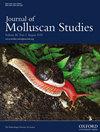雌性玛雅章鱼生殖期视腺通路对热应激的响应
IF 1.2
4区 生物学
Q2 MARINE & FRESHWATER BIOLOGY
引用次数: 1
摘要
章鱼视腺是多种信号分子的来源,这些信号分子控制着不同生理阶段(如成熟、衰老和死亡)的转变。本研究聚焦于玛雅章鱼生殖阶段视腺的作用,探讨在高温下阻止繁殖的分子机制。利用RNA测序技术,分析和比较了在最佳和热应激(高温)条件下产卵前、产蛋期间和产蛋后雌性玛雅人的视腺转录组谱。每个阶段都表现出明确的转录组模式,并且都受到热胁迫的强烈影响。在最佳温度下,视腺在调节能量平衡方面发挥着重要作用,正如在食物匮乏时调节代谢率、动脉血压和ATP来源管理的基因表达所表明的那样。在高温下,交配雌性视腺(产卵前)显示编码神经肽(FMRF-amide, APGW-amide, PRQFV-amide, FCAP, buccalin和myomodulin)和多巴胺β -羟化酶基因的基因上调。在高温下产卵时,神经肽受体capaR和性肽受体上调,而对受精至关重要的胎儿蛋白b和输卵管特异性糖蛋白基因的同源基因下调。玛雅章鱼视腺基因表达的这些变化可能是高温抑制产卵的基础,之前在该物种中观察到。此外,产蛋后,卵孵化期间热应激影响了类固醇激素和甲状腺激素生物合成以及炎症和凋亡通路相关基因的表达。本文章由计算机程序翻译,如有差异,请以英文原文为准。
Response of optic gland pathways to thermal stress in the reproductive phase of female Octopus maya
The octopus optic glands are the source of multiple signalling molecules that control the transitions through different physiological stages, such as maturation, ageing and death. This study focused on the role of the optic glands during the reproductive phase of Octopus maya, investigating the molecular mechanisms that prevent reproduction at elevated temperatures. RNA sequencing was used to analyse and compare optic gland transcriptomic profiles of female O. maya before, during and after egg-laying under optimal and thermal stress (elevated temperature) conditions. Each stage showed well-defined transcriptomic patterns, and all were strongly affected by thermal stress. At optimal temperature, the optic glands contribute importantly to regulating the energetic balance, as suggested by the expression of genes that modulate the metabolic rate, arterial blood pressure and the management of ATP sources in response to food deprivation. At elevated temperatures, the optic glands of mated females (before egg-laying) showed upregulation of genes encoding neuropeptides (FMRF-amide, APGW-amide, PRQFV-amide, FCAP, buccalin and myomodulin) and the dopamine beta-hydroxylase gene. During egg-laying at elevated temperatures, the neuropeptide receptor capaR and the sex peptide receptor were upregulated whereas homologs of fetuin-B and oviduct-specific glycoprotein genes, crucial for fertilization, were downregulated. These changes in optic gland gene expression in O. maya may be the basis for the high-temperature inhibition of egg-laying, previously observed from this octopus species. Furthermore, after egg-laying, during egg incubation thermal stress affected the expression of genes involved in steroid and thyroid hormone biosynthesis and in inflammatory and apoptotic pathways.
求助全文
通过发布文献求助,成功后即可免费获取论文全文。
去求助
来源期刊

Journal of Molluscan Studies
生物-动物学
CiteScore
3.00
自引率
8.30%
发文量
36
审稿时长
3 months
期刊介绍:
The Journal of Molluscan Studies accepts papers on all aspects of the study of molluscs. These include systematics, molecular genetics, palaeontology, ecology, evolution, and physiology. Where the topic is in a specialized field (e.g. parasitology, neurobiology, biochemistry, molecular biology), submissions will still be accepted as long as the mollusc is the principal focus of the study, and not incidental or simply a convenient experimental animal. Papers with a focus on fisheries biology, aquaculture, and control of molluscan pests will be accepted only if they include significant advances in molluscan biology. While systematic papers are encouraged, descriptions of single new taxa will only be considered if they include some ‘added value’, for example in the form of new information on anatomy or distribution, or if they are presented in the context of a systematic revision or phylogenetic analysis of the group.
 求助内容:
求助内容: 应助结果提醒方式:
应助结果提醒方式:


